
Nick Bastis and Darius Mikšys, installation Kickstarter (Augmented Sound), detail, XII Baltic Triennial, CAC, 2015, Photo: Andrej Vasilenko
The XII Baltic Triennial began in early 2014 with small gestures, meetings, presentations and seminars. Its main exhibition opened at the Contemporary Art Centre (CAC) in Vilnius in September 2015, and already in November opened yet another exhibition, “A Million Lines” at Bunkier Sztuki Gallery for Contemporary Art in Krakow, where some of the works came from the exhibition in Vilnius. Currently in a latent state, the project will re-open in Dailes teātris in Riga on May 7 and will conclude in Estonia later this year. Virginija Januškevičiūtė, curator of the project, has been interviewed by Aneta Rostkowska, curator at Bunkier Sztuki Gallery for Contemporary Art, who has taken the Triennial’s own keywords, first published by the CAC, as a starting point.
MURMUR
MODEL
Aneta Rostkowska: A pilot project for the XII Baltic Triennial was ‘Prototypes’. Can you explain the reasons for introducing a pilot project? In which way was it helpful for the main exhibition of the Triennial?
Virginija Januškevičiūtė: The motto of the event – one that crystallised around the same time as the other two members of the original curatorial team, Aurimė Aleksandravičiūtė and Jonas Žakaitis, stopped working on the project, but had still been floating around for a while – was related to what the kind of a ‘Kunsthalle’ like the CAC thinks of itself; the motto read: “What is an artwork today can be something else tomorrow”. As if by accident, I read something similar in an interview with David Bernstein, an artist and a friend. For me, this idea summed up a great deal of motivation for going to exhibitions or making them, besides being a way of celebrating other peoples’ work. CAC, where I have worked for many years now, is a kind of a place where you come to see some very wholesome work and take parts of it away with you. You’re also very well aware that someone else is picking up something else from that very same whole and carrying it in a very different direction. David spoke about the idea from a historical point of view, that how we perceive art changes in time and what we expect from it now is probably not what we will expect from it in the future. In fact, these things can change in no time at all, it is enough to change one’s own position or a point of view: I find it interesting to think about artworks not just from an institutional perspective (meaning, not just as works of art), but to think about the ways they can act in the world. Apart from the so-called interdisciplinary or transdisciplinary practices that are, perhaps, a more common trope in contemporary art, another important reference was an idea of a person just walking down a street and singing a popular song solely for their personal pleasure. I am fascinated by this kind of acknowledgement and effect.
The making of the project soon became sort of an attempt to construct a perfect day like that, where works and ideas could float like good tunes. When it was time to announce the Triennial’s main exhibition, it felt more natural not to announce the artists but the things that bound their works together. They became keywords, each one referring not to a particular artwork but to something common between a few. The very first of them, the word ‘murmur’, relates to something Michel Foucault once said: that if the function of author would disappear (and he assured it will), in other words, if authorship as such would disappear, culture would then continue developing in an anonymous murmur.
The ‘Prototypes’ exhibition, which opened late in 2014, helped form collaborations and try things out, which was an especially important aspect of this exhibition’s event programme. In some way, it was not even trying to become a whole, nor was it very well installed either. They were great works, but the install was sort of asking if it was possible to make a show where the central theme of each artwork was something as obvious as a human face and have nobody notice. A little later, I finally saw the much-discussed film ‘The White Diamond’ by Werner Herzog where the protagonist, an engineer, talks about how people fail to notice things they are not looking for, or things they do not know. Both kinds of blindness continued to be central to the explorations that followed. This intuition of the limits of imagination and the image of a person walking down the street singing, led to the feeling that was aimed for in the exhibitions that followed, including the one that you and I have recently curated in Krakow, ‘A Million Lines’.
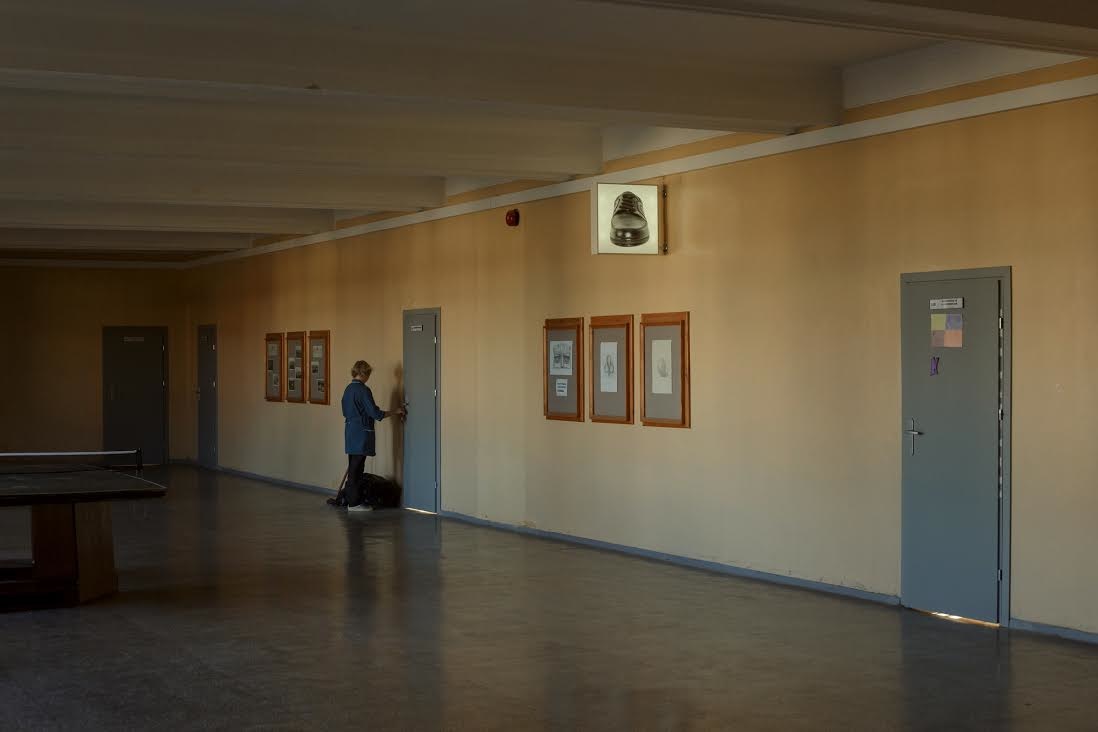
Liudvikas Buklys , installation “Prototypes“ at Salomėja Neris gymnasium, detail, 2014–2015, Photo: Andrej Vasilenko
MOOD
MENU
MOON
TEMPLE
SISTERS
SYZYGY
EDUCATION
ALREADY THERE
DECOMMISSIONING
BIOMORPH
BIOGRAPHY
PARTICLE
PLASTIC
One of the projects in the Triennial is by Goda Budvytytė and Viktorija Rybakova and it refers to the history of plastic. The artists also incorporated some plastic elements into the stairs of the CAC. In what way has this type of project contributed to our knowledge about plastic, or is its goal here very different?
The installation treated the staircases of the CAC in a way that is common in Mexico City, where crumbling stairs in busy public spaces such as underground train stations are often mended with plastic fillings. The title of the piece is Plastiglomerate, which is a term used to describe a stone consisting of natural materials and hardened molten plastic – a fairly recent formation often used as an example of human influence on nature. It is also the title of the last chapter in the draft timeline of plastic that Budvytytė and Rybakova have published for the Triennial. The timeline traces how plasticity — a feature found in certain minerals and organic substances — was historically isolated from those materials when people gradually learned to reproduce and develop it in artificial materials, and how some of this production returned to the geological realm, transforming it. The treatment of stairs roughly represents what is happening in nature — by way of formal analogy but even more so by way of aligning those two processes in time. On one hand, there is the forming of plastiglomerate, and on the other, the mending of the stairs in Mexico, a country where plastic is very present. The installation shows them as simultaneous, happening at the same time, regardless of whether we know about them or not. Going up and down those stairs at the CAC makes you a participant, although you already are.
BALTIC
You selected works from various different countries for the exhibition, not only from the Baltics. In what way is the Triennial ‘Baltic’ then?
There is an anecdote about how the writer Tomas Venclova brought the ashes of George Maciunas — founder of Fluxus who was born in Lithuania but died in New York — back to Lithuania. Venclova knew the ashes were scattered in the water off Long Island, so he consulted with scientists who confirmed that if that was true, any given glass of water off Long Island Sound would contain molecules of his ashes. So he brought some of this water back.
Anecdotes aside, one reason the Baltic is interesting for the project is exactly because it’s a body of water. Before finding ways to embrace their fluid ways, many scientists and philosophers found oceans and seas dysfunctional and impossible to ascribe any structure to: Roland Barthes called it a ‘non-signifying field [that] bears no message’ whilst the anthropologist Claude Levi-Strauss called an ocean ‘a diluted landscape’ with an ‘oppressive monotony and a flatness’. The title of the event series by Post Brothers, Nothing but Waves, was eventually taken from the writings on one such author and political theorist, Carl Schmitt. It is interesting to consider how something so familiar can appear so unknowable.
CLIMATE CHANGE
MICROORGANISMS
SEABASING
SHIPWRECK
VOICE
SPIT
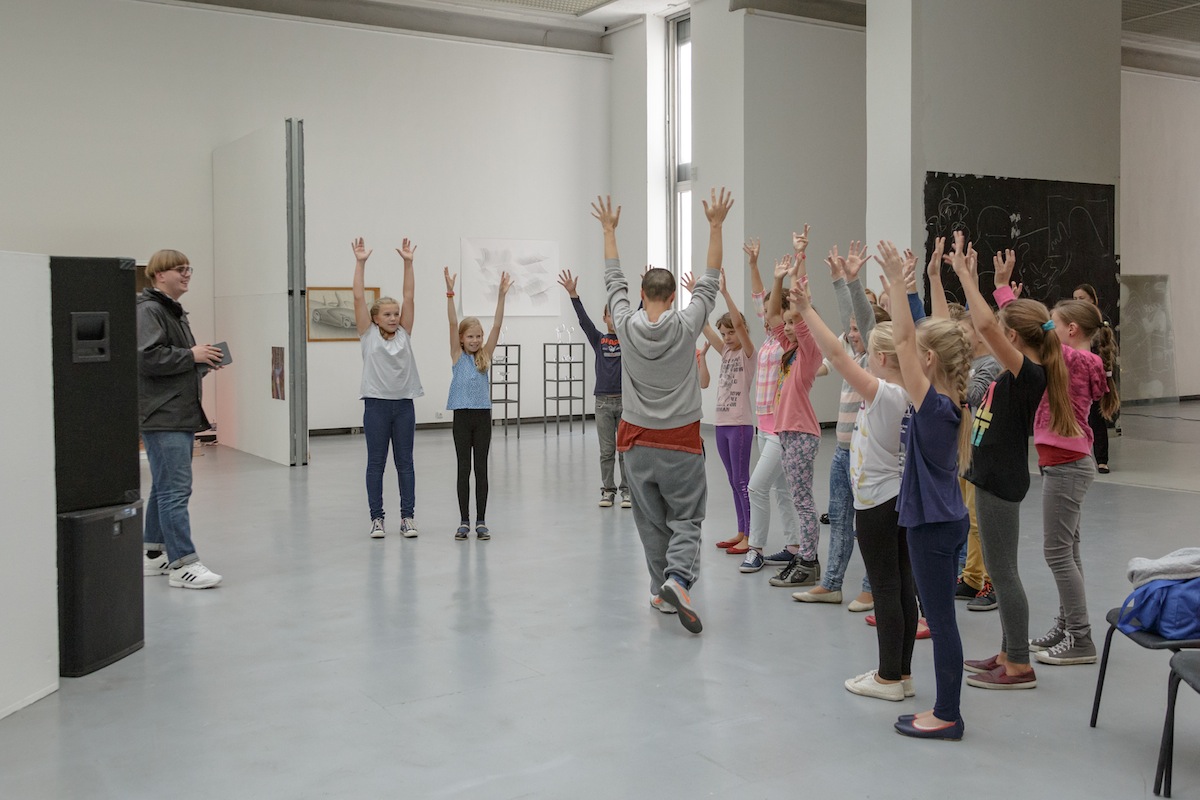
“Eleven, Nearly Twelve”, workshop of movement with Jay Tan, XII Baltic Triennial, CAC, 2015, Photo: Andrej Vasilenko
Why does Jay Tan encourage visitors of the Triennial to spit on her artwork? Is it a symbolic gesture, saying good bye to a certain status of art in our culture?
It could be. But there is also a very pragmatic reason — if nobody spits on the membranes of the speakers when they play, nobody will get to see the spit fountains. That’s also why the speakers are so loud and different in design, and why the sounds they play are all different, too. The piece is a sculpture and an instrument at the same time.
MIST
There are several digital projects (apps etc.) that inhibit virtual or mobile realms of the Triennial. One of them is present in the exhibition space in the form of mist. Can you explain why you decided to include these in the exhibition?
Perhaps exactly for the reason you mentioned — the Triennial wanted to involve more than one realm.
MORE PLASTIC
Why more?
This one is about pollution.
PREGNANT
BUTOH
COLOUR
CLASSES
BALLARD
One of the Triennial’s most ambitious projects where science meets art is by Nomeda and Gediminas Urbonas’ Psychotropic House: Zooetics Pavilion of Ballardian Technologies, inspired by the short stories of J.G. Ballard, an English sci-fi writer who wrote, “Imagine principles of future infrastructure and knowledge production”. Could you explain what the roles of the artists are in this project?
In fact their project is much larger than the whole of the Triennial; it is the first exhibition instalment of a series that Urbonas has been developing, attempting to bring ‘human knowledge, non-human knowledge and poetry’ into a dialogue or rather to assemble them into a functioning conceptual laboratory. The three types of knowledge are conveniently represented in Adomas Mickevicius Valley in Kaunas — named after a poet — hosting both a zoo and Kaunas Technical University, which have invited Urbonas to help them develop a future research centre. The process will take up to five years at least. The duo, who have been active in the arts for many years, also teach at MIT in Boston where they now have a chance to take part in defining the logic of scientific research.
BALTXPLOITATION
ONYX
WOODS
MYTH
HOLY MOTORS
In our conversations before, you mentioned several movies that were important for you while you were working on this exhibition, among them were Holy Motors and a video by Rosalind Nashashibi. Could you reveal more about these and explain in what way they were inspiring?
I saw Rosalind’s Open Day (2007) – one of the films that she showed at the CAC Cinema in early 2014 – as an encouragement for a more intrusive eavesdropping, shortly put. This led to me knocking on many doors just to see how things worked behind them.
And I am not sure how to sum up Holy Motors; it does not add up, right? Bottomless, it changes with every conversation about it. It’s a lot about reinvention and reframing. The idea of cinema (or a world) without cameras is very powerful alone. As part of the Triennial the CAC has recently published a conversation between Elena Narbutaitė and Deimantas Narkevičius called “Body starting to change”. In it, the two artists talk about the experience of music; its format and layout (using Elena’s watercolours) replicates an earlier publication — an interview with none other than the actress who plays the limo driver in Holy Motors, Edith Scob. That’s the closest I could get to the movie, and I have a sense it’s going to be electric regardless of there being nothing close to a direct reference.

The Oceans Academy of Arts, Learning Not to Learn, detail, XII Baltic Triennial, CAC, 2015, Photo: Andrej Vasilenko
OCEANS ACADEMY OF ARTS
“Knowing how things should be can take freedom away” says Algirdas Šeškus in the small text attached to the exhibition invitation. Is The Oceans Academy of Arts of Ola Vasiljeva a way of bringing that freedom back and if so, in which way?
Ola’s drawings proposed a model of a school that is different from the usual method of schooling, of knowledge being handed down to kids. In the poster she did for the kids who come to the CAC’s actual education programme she talks about one of her inspirations being a character from a film, a boy who refuses to go to school because there they teach things he does not know and considers it utterly unfair. In recent works by Oceans Academy of Arts freedom consists of an opportunity to teach oneself rather than be taught.
And Šeškus is advocating both a certain personal freedom and the freedom of expression of art, which can sometimes compete with the expression of the artist. He says that art uses artists to make artworks. If an artist knows too well how to do things he or she can become an obstruction, costing art ‘double effort’, having “to conquer not only resistance of the material but also ours”.
SCALE
The XII Baltic Triennial will encompass several exhibitions and many events in 2015 and 2016. Could you reveal some of them?
Right after the conversation between Elena and Deimantas comes out there will be another publication, “Proteus and the Radical Imagination” by writer and philosopher Kristupas Sabolius, his first book in English. Look it up at the CAC or places like Vilnius Book Fair. At about the same time another group exhibition will follow in Riga.
MYRIAD
The exhibition doesn’t have a particular theme but it rather refers to a myriad of themes or ways of working that artists can employ in their practices. A way of working that is quite present in the Triennial is an attempt to merge art with other fields like science or treating art as a kind of by-product of a quasi-scientific activity (Antanas Gerlikas’ drawing with lines). Why you are interested in that? Do you think the ‘art of the future’ will be like that?
. . . “For art’s sake, it’s irrelevant whether [a story is] sincere or deceitful. An idea need not be viable, it just needs ample energy. An idea need not be plausible, what counts is that it moves.” (Dexter Sinister, Last Shot ClOck, 2014)
GRIEF
Zofia Rydet’s photographs introduce a theme on the “exhaustion of the studio model of artistic work” nowadays. Do artists represented in the show work in a different way to the ones Rydet shows?
I think the term ‘studio model’ mostly came about to define a type of practice where a finished work arrives from an artist’s studio to an exhibition. At some point in history it was important to define this model to show that, in contrast, a work can also arrive unfinished and be only fully realised during the show, or during its public appearance of any kind. This does not mean that artists no longer used studios. It says more about how much control the artist is willing to give up over the final result, which decisions they choose to make by themselves and which ones they refuse to make and delegate to others. The artists shown in the Triennial display quite an array of choices in that sense.
Rydet took the idea that the ‘studio model’ is becoming less relevant quite literally, and photographed every kind of artist in their studio. It’s a strange but beautiful gesture, to my mind, resulting in a great series that would never have happened otherwise if she was, for instance, more careful about her science-like approach. These photographs are part of a gigantic series called “Sociological Record”, and were once shown in Rydet’s exhibition “Disappearing Professions”.
PALACE OF INVENTIONS
Would you imagine calling CAC during the Triennial exhibition a “palace of inventions”?
It’s not the first, and I hope not the last time someone calls it that. Except the ‘palace’ part is sounding stranger and stranger.
This tag also refers to The Palace of Re-Invention by Andreas Angelidakis — the design of the exhibition that is very suggestive and artistic. Could you explain why you decided to invite Andreas Angelidakis and how you relate the exhibition design to the overall concept of the XII Baltic Triennial?
The Triennial and Andreas met halfway into doing something of their own and could suddenly work better together. It was interesting to see how artworks could not only cohabit a space but also be containers and supports — veils, poisons or a strange ideas — for each other in various ways; Andreas’ contribution is one of those artworks, so large it is sometimes out of sight, like when you are inside one of the carpet towers to see a film. Andreas, just like the Triennial, was inclined to figure out what the CAC is and what it can do. He did it mainly by using only the materials that he had readily found at the CAC — remains of other projects or stock accumulated for later – as well as the existing architecture, shifting lots of it around. He also switched inside for outside, light for dark and a wall for a passage in a couple of places, built rooms inside rooms as well as a hill inside a house, all by making just a handful of elements and decisions. The way each of those simple, singular elements had so many strong and varied effects is nuts.
CURRENCY
PRACTICALITY
OS
What is OS, is it a keyword?
It’s an abbreviation that first entered the list because of the Temple OS, an operating system (hence OS) by the British programmer Terry Davis which was introduced by Brud collective as part of their project, Cryptocurrency Fairytale. The word ‘temple’ was not included in the list, but later I learned that Davis never stuck to it either. The operating system that he started working on around 1985 had a different title and only became Temple OS when Davis started claiming he was developing it under God’s direction. There is some entertaining material on this on YouTube. Knowing how elusive the work of Brud is, no wonder you had to ask. Other parts of Cryptocurrency Fairytale were presented in the exhibition as a light sculpture (to be more precise, a lamp consisting of three tubes, each emitting light of a different wavelength and thus subtly changing what an eye sees), a modified chessboard, an origami spatial puzzle that changed its configuration daily, new yoga asanas, texts online (for instance, these two blogs: cuni.hotglue.me and https://phlegm.hotglue.me), and finally a certain character’s journey through the streets. During the times when this last piece was not being performed the costume of this character was hung in the exhibition. Brud will come back into the picture also in 2016.
On the other hand, “OS” stands mainly for an effort to control things.
WAVES
NOW
Who said, “Can you imagine, we all sleep in beds” and “I wonder where the cigarette is now?”
The first one-line sentence is something I said a lot during the guided tours: I noticed that it helped people appreciate Mikko Kuorinki’s work from 2013, Sleep Prop (Right Hand), as a portrayal of the contemporary human condition. How could we even need props for something as natural as sleep? I would then also talk about how we all have sleep props but when we buy pillows or blankets, they do not yet have the shapes that we need. Each and every night we create the shapes, adapting them for ourselves. I think what Mikko did is an interesting act of sculpture: he produced something that existed in reality as a shape but never before as an object.
The cigarette line is something Mikko picked up from Darius Mikšys. One summer day we were all at the CAC café watching someone do cigarette tricks — one of those routines in which a cigarette is made to disappear and reappear when you don’t expect it. The illusionist (he was good!) switched to card tricks afterwards for a bit, which seemed somewhat too conventional and the enthusiasm at our table started to wear off. But after a few good minutes we suddenly heard Darius say, “I wonder where the cigarette is now?” It was perfect, we hadn’t seen the cigarette in a while and were just about getting used to not being bothered, but why not? The air was still charged, if you paid attention. Acknowledging that lingering suspense felt very spot-on. A few weeks later I went to see the New Guiney and Australian art display in Radvilos Palace with Gerda Paliušytė and Anders Kreuger because Anders was going to write about it for the Triennial’ guidebook. I suddenly received a text from Mikko: “I wonder where the cigarette is now?” I can’t remember if I replied to his text, but I imagine we agreed that this kind of charge is, perhaps, the best thing you can expect from an exhibition and promised each other to learn how to use it.

XII Baltic Triennial, exhibition view, CAC, 2015, Photo: Andrej Vasilenko
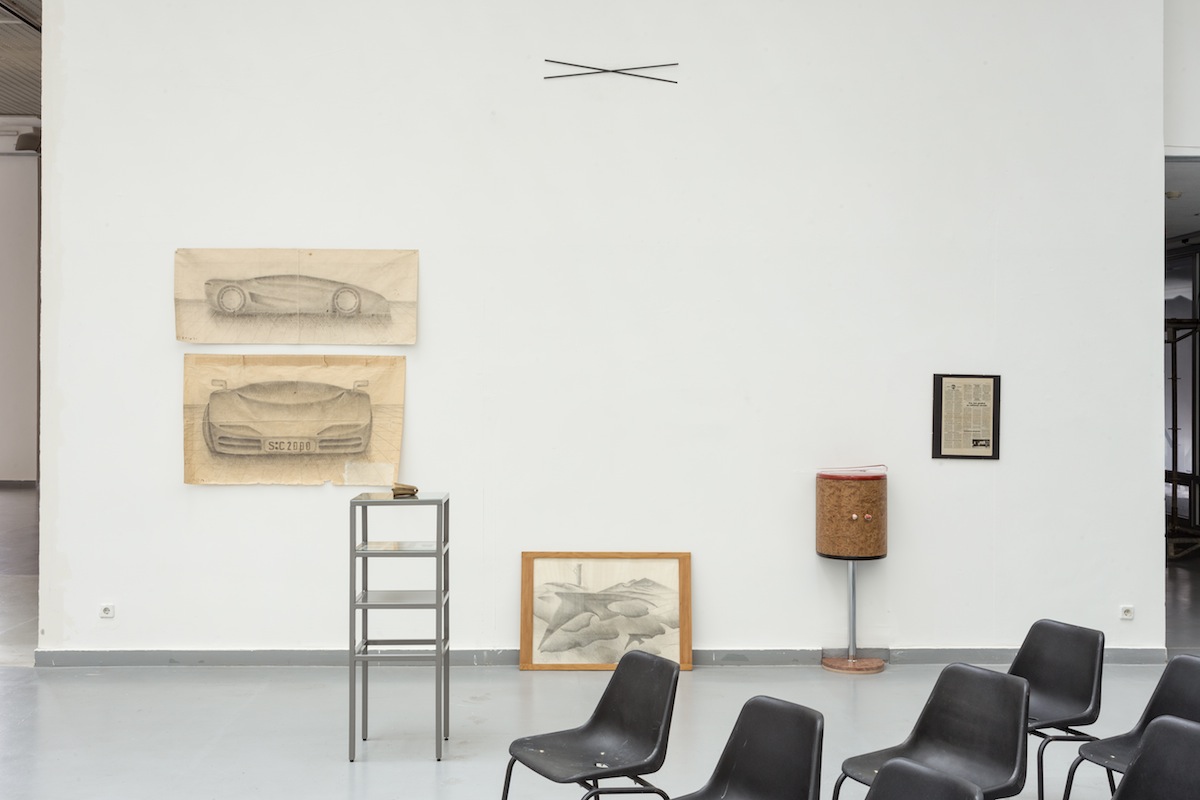
Antanas Gerlikas (with Laura Kaminskaitė and Viktorija Rybakova) installation Solo exhibition at CAC Kitchen, detail, XII Baltic Triennial, CAC, 2015, Photo: Andrej Vasilenko

Viktorija Rybakova, Navakas’ Catalogue, XII Baltic Triennial, exhibition Million Lines at Contemporary Art Gallery Bunkier Sztuki, Krakow, 2015–2016. Photo: Laura Kaminskaitė
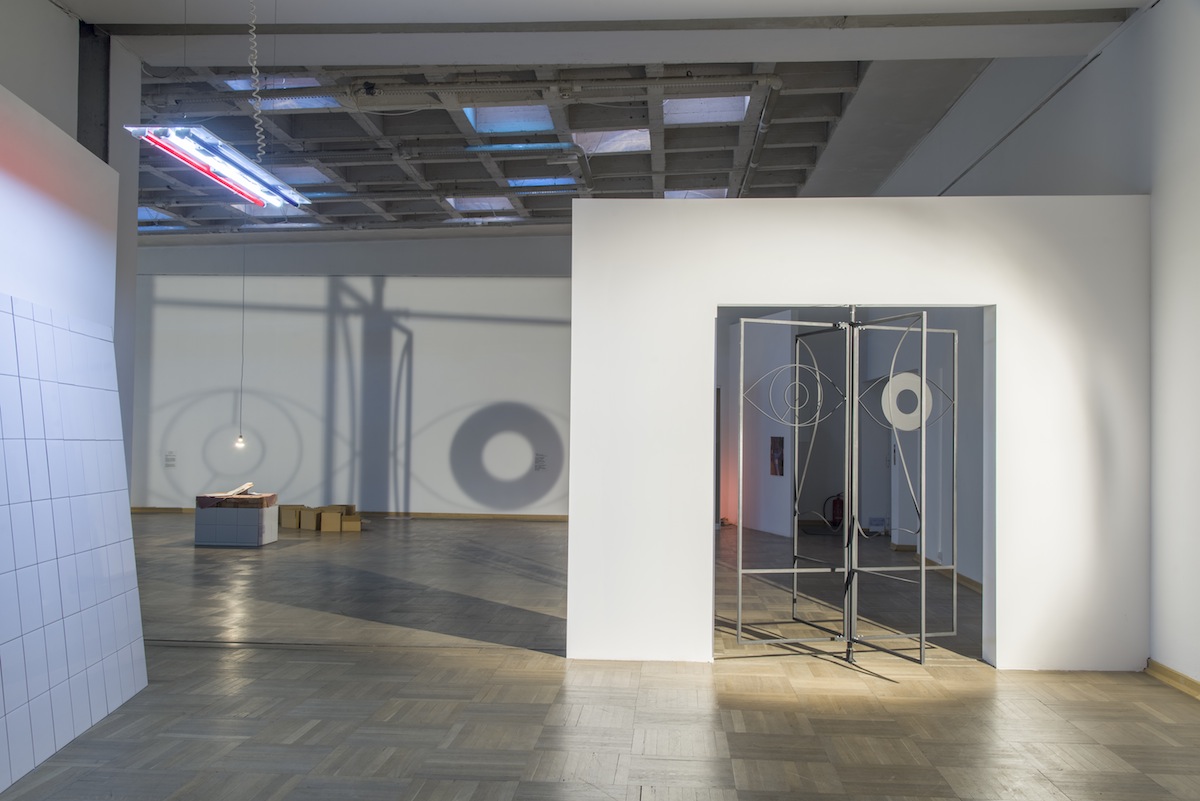
XII Baltic Triennial, Million Lines, exhibition view, Contemporary Art Gallery Bunkier Sztuki, Krakow, 2015–2016. Photo: Justyna Gryglewicz
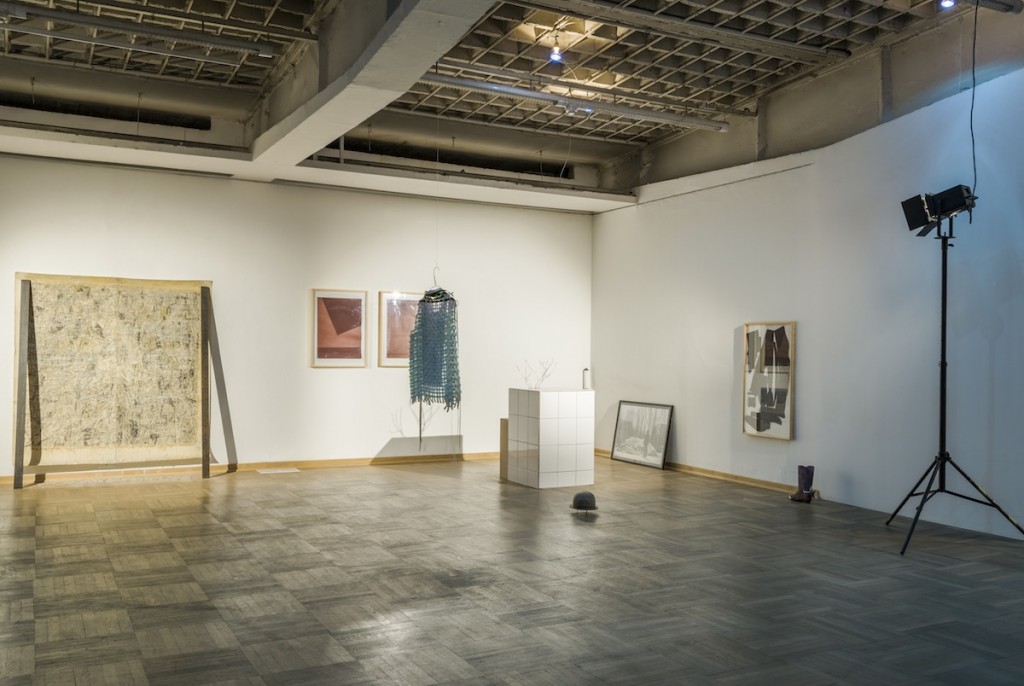
XII Baltic Triennial, Million Lines, exhibition view, Contemporary Art Gallery Bunkier Sztuki, Krakow, 2015–2016. Photo: Justyna Gryglewicz






























